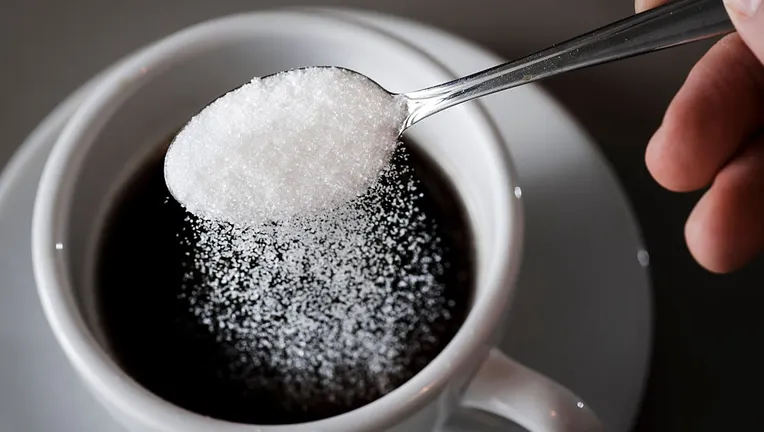In five Swedish communities during the course of the coronavirus disease 2019 (COVID-19) pandemic, researchers employed wastewater analysis to estimate the temporal and spatial usage of artificial sweeteners such as saccharin, sucralose, and acesulfame. Their findings were published in the journal Environment International.
Context
The popularity and use of artificial sweeteners—which are significantly sweeter than sucrose and other conventional sugars but have less calories—has skyrocketed in recent years due to the growing awareness that consuming too much sugar can cause weight gain and obesity.
The use of several artificial sweeteners in drinks, preserved foods, and desserts has been permitted by the European Health and Food Safety Agency. Low-calorie foods and beverages also frequently contain artificial sweeteners. But mounting data points to the possibility that artificial sweeteners could be dangerous, raising questions about increased obesity and type 2 diabetes risk as well as potential carcinogenetic effects.
Up until now, population-based surveys, manufacturing data, and sales data have been the main methods used to track the consumption of artificial sweeteners. These methods carry the danger of over- or underestimating usage. Wastewater analysis is a useful tool in epidemiology to assess exposure to different compounds and their usage.
Concerning the study
In the current study, the researchers assessed the temporal use of three artificial sweeteners—saccharide, sucralose, and acesulfame—in five distinct populations throughout Sweden using wastewater analysis. They also investigated whether the COVID-19 pandemic-related restrictions had an impact on these populations’ artificial sweetener consumption. The study also sought to ascertain whether there would be any health concerns associated with the exposure levels to artificial sweeteners as identified by the wastewater analysis.
The COVID-19 pandemic was the time period that the researchers concentrated on because previous research had shown that the limitations imposed on disease mitigation during the pandemic had a detrimental effect on people’s mental and physical health. This led to changes in behavior, such as an increase in the consumption of sugary foods and a decrease in social interactions and physical activity.
Using flow-dependent sampling, the researchers took wastewater samples from treatment facilities in Enköping, Kalmar, Knivsta, Östhammar, and Uppsala. Samples were taken over the course of two years for some of the populations. Analysis was done on 180 wastewater samples in total and 14 samples that were taken from Uppsala prior to the pandemic.
Tandem mass spectrometry and ultra-high-performance liquid chromatography were used to evaluate the wastewater samples. The method’s quantification and detection limits were computed, and chemical separation and quantification were performed.
For quality control and contaminant monitoring, native and isotopically labeled internal standards were employed. The daily mass load per thousand individuals and the dose equivalent of sucrose were computed as metrics to account for the three artificial sweeteners’ varying sweetness.
In order to account for the potential direct discharge of artificial sweeteners into the sewage, population-normalized statistics were calculated. Furthermore, a regression model was used to determine the three artificial sweeteners’ usage trends in Uppsala between 2019 and 2022.
Outcomes
The study discovered notable variations in the three artificial sweeteners used by the five Swedish communities under investigation. Sucralose consumption was higher in Kalmar, in the southern part of Sweden, whereas saccharin and acesulfame were more commonly used in Östhammar and Enköping, in the central part of the country.
In all five areas, the sucrose equivalent dosage values consistently demonstrated a prevalence pattern of sucralose use greater than that of acesulfame or saccharin. The second most common artificial sweetener was acesulfame.
With the exception of Uppsala, all of the communities’ monitoring periods were brief, therefore no obvious patterns in usage changes were seen. On the other hand, the Uppsala monitoring data over a four-year period showed a yearly increase in sucralose use of about 19%, compared to 8% and 9% annual increases in saccharin and acesulfame use, respectively.
The COVID-19 pandemic had no immediate or delayed effects on the artificial sweetener levels. These results suggested that the people living in these five Swedish villages were not consuming more foods and drinks with artificial sweeteners as a result of the stress brought on by COVID-19 and the related restrictions.
Additionally, none of the artificial sweetener consumption levels were found to be above the recommended threshold for daily intake, indicating that these consumption levels did not pose any health risks, even though only the acesulfame consumption levels were significantly lower in the recommended range.
In conclusion
Overall, the study demonstrated that wastewater analysis is a useful method to supplement the sometimes erratic survey data in estimating the amounts of artificial sweetener intake. The results showed that none of the five Swedish populations’ intake levels of three popular artificial sweeteners were significantly harmful to their health and were within suggested limits.


